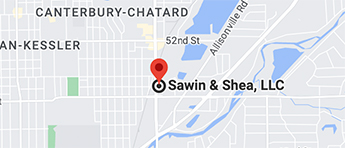When you file for bankruptcy in Indiana, there’s a lot to learn quickly. You’ll need to understand bankruptcy terms, fill out certain forms, and make some decisions about the best bankruptcy route for your financial circumstances. This includes making a choice between Chapter 7 and Chapter 13 bankruptcy. Let’s take a look at the common questions that arise during this process.
What’s the First Step in Filing for Bankruptcy?
Start by getting good advice from a reputable bankruptcy attorney who can describe the filing process and help you zone in on the type of bankruptcy that’s right for you. They’ll also help you understand which debts can be discharged by bankruptcy and which cannot. Student loans and some back taxes, for example, generally cannot be wiped out by bankruptcy. In the early stages of filing for bankruptcy in Indiana, you’ll go through a process of listing all of your debts and identifying every entity where you owe money.
How Do I Choose Between Chapter 7 and Chapter 13?
Chapter 7, also called a liquidation bankruptcy, often appeals to people with low incomes who have very few assets. It can wipe out a backlog of medical bills, credit card debts, and other unsecured debt. An automatic stay, or hold, prevents your creditors from bothering you for a period of time while a trustee reviews your situation to determine if there are any non-exempt assets to liquidate to pay your creditors something. Chapter 13, or reorganization bankruptcy, is a good choice for people who have enough income or assets that disqualify them for Chapter 7 but are still unable to meet their debt obligations. Chapter 13 is usually a better fit for homeowners behind on their mortgage, because it allows them to catch up on mortgage payments without losing their home.
What Forms Do I Need to Fill Out?
A number of forms are required to establish your financial situation. The U.S. Court’s website provides forms you can download, but we’d caution you to seek out the help of the bankruptcy attorney. An experienced bankruptcy attorney will help you with the forms and explain them to you. A difficult financial situation can be made worse by submitting incorrect or incomplete forms. For Chapter 7 bankruptcy, you’ll need to pass an income based test, the means test, which determines whether you are presumed to qualify for a Chapter 7. After your forms are complete, they’ll be submitted to the Indiana bankruptcy court. You’ll also have to prove that you have attended a credit counseling course.
What About Indiana Bankruptcy Exemptions?
Some things can be safeguarded with exemptions during bankruptcy. Exemptions are protections that allow you to retain property or value. For example, Indiana residents can exempt up to $19,300 per person of equity in residential real estate. Each person in a bankruptcy ca exempt $10,250 in equity in personal property, and up to $400.00 per person of cash or cash equivalents. There are also other less-common Indiana exemptions. A bankruptcy attorney will help you understand them.
Sawin & Shea – Indianapolis Bankruptcy Attorneys
Filing for bankruptcy is not the end. It’s the beginning of a new financial life for you. The Indiana bankruptcy attorneys at Sawin & Shea can help you get rid of the overwhelming debt and advise you on life after bankruptcy. We are here for you during this life-changing process. Please do not hesitate to call us today at 317-759-1483 or send an email for a free consultation. We are ready to help.



